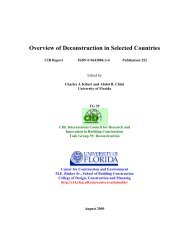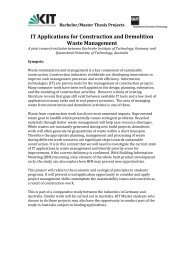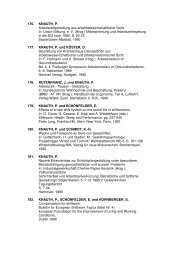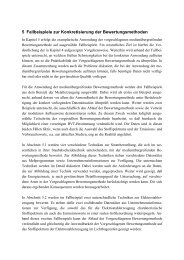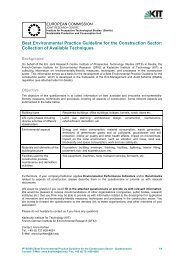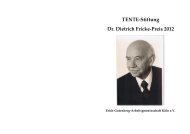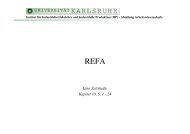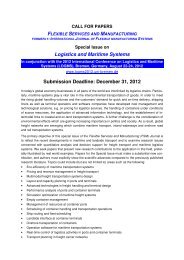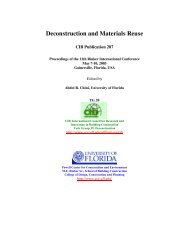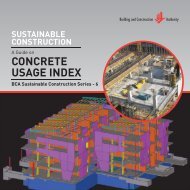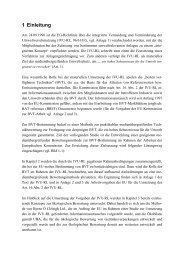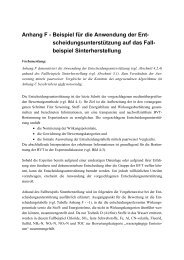Waste reduction final report -4 - Test Input
Waste reduction final report -4 - Test Input
Waste reduction final report -4 - Test Input
Create successful ePaper yourself
Turn your PDF publications into a flip-book with our unique Google optimized e-Paper software.
5. Exemplars, case studies<br />
The following sections highlight two of the latest development projects in Singapore that<br />
have successfully adopted sustainability principles.<br />
Case Study – Samwoh Eco-Green Building<br />
The Samwoh Eco-Green Building (Figure 6) is the first 3-storey office building in South East<br />
Asia to be constructed using concrete with RCA beyond code limits for structural concrete. It<br />
was a joint project between Samwoh Corporation, BCA and Nanyang Technological<br />
University, and funded by the MND Research Fund for the Built Environment, to conduct a<br />
full-scale evaluation on the use of various percentages of recycled concrete aggregates in<br />
structural concrete for building structures.<br />
Figure 6 - Samwoh Eco-Green Building<br />
Currently the use of RCA from construction and demolition wastes in structural concrete at<br />
low percentages (10-20%) is already allowed in Singapore. It is also important to highlight<br />
that construction and demolition wastes in Singapore generally comes from relatively clean<br />
concrete structures with practically no variability in aggregate type since granite is the main<br />
type of coarse aggregate used. Figure 7 illustrates the processes involved in the production of<br />
RCA from construction and demolition wastes. In this building project, the first, second and<br />
third levels were constructed with Grade 40 concrete using 30%, 50% and 100% RCA<br />
respectively.<br />
Another unique feature of the building was the use of fibre-optic sensors embedded in the<br />
columns to monitor the long-term structural performance of the concrete. The long term<br />
monitoring data obtained from the building will be useful for in-depth structural analysis and<br />
the formulation of future specifications on the use of RCA for structural concrete. Finally, the<br />
results can be used to build confidence of industry stakeholders on the use of RCA and for<br />
policymakers to consider increasing the limit of percentage replacement of RCA for<br />
structural concrete going forward. The Samwoh Eco-Green Building has also achieved the<br />
highest green building rating, the BCA Green Mark Platinum, due to extensive use of other<br />
green and sustainable features.<br />
72



